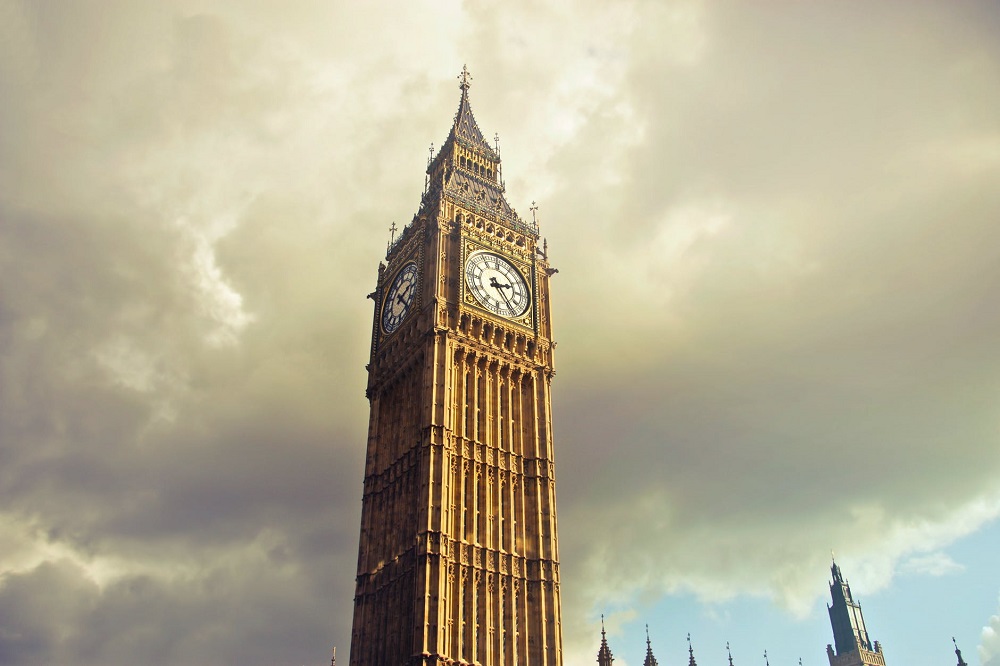It is one of the world’s most photographed buildings but has been shrouded with scaffolding for the past four years as part of a £79m facelift.
And whilst the construction project was delayed the project managers and number crunchers are looking at the revised schedule of work at Big Ben, or Elizabeth Tower as the building is properly named.
However because of the pandemic time has had to wait for the Elizabeth Tower, which houses the 162-year-old Big Ben as Covid has put months on the work at the biggest conservation project ever embarked on there.
Experts are looking at a revised schedule and to see what impact Covid has had on the budget but now expect it to reopen in 2022. They are also looking at new ways to allow visitors to enjoy the 11-storey building.
The work means the iconic clock has been silenced since August 2017, apart from special occasions.
The spectacular tower with its distinctive clock faces is a Grade I-listed building and a UNESCO World Heritage site.
It was briefly reconnected for New Year’s Day and Armistice Day to mark key dates in the nation’s calendar.
Like many other construction projects worldwide, Covid has also had an impact on the work at the Elizabeth Tower.
Construction had to stop on March 25 last year when the first lockdown was called to put social distancing measures in place.
There was a phased reopening to the construction two months later from May 11.
The teams had to change the way they worked, with temperature checks, shift work, new signs and changes to facilities such as toilets.
And because they are working in a confined area, 12m by 12m, they have had to follow strict Covid rules as well as constructive safety regulations.
NOW READ: Three London boroughs collaborate to help diverse young talent into creative careers
Before the pandemic struck, the work was on course to be finished by the end of 2021 and the chimes of Big Ben were expected to chime out again every day as normal. The construction contract means it has chimed every New Year’s Eve during the building work as it will this December 31.
But shutting down the site for four months and the new ways of working means that is unlikely.
However the construction team working on the Elizabeth Tower is “back to full productivity” according to a Palace of Westminster spokesman.
The current work includes “the backstage part of the project” including water and electricity.
During the early days of the project the construction team discovered a time capsule left in June 1956 with a ha’penny, copy of the Daily Express and a message from their predecessors who described finding a capsule left 50 years before.
Whilst the world’s most famous clock gets regular maintenance it was more than 32 years since more extensive works were done on the Great Clock and the Elizabeth Tower.
The project includes repairing cracks in the masonry as well as giving experts a chance to deal with leaks and erosion from the elements and pollution in the atmosphere in London.
The original building materials came from Yorkshire and Normandy.
The specialist renovation team is also dealing with severe rusting during the project and they discovered that the bomb damage inflicted during World War Two was more extensive than previously thought.
And it means they can also bring the colour scheme back to the original planned by Parliament’s architects Charles Barry and Augustus Welby Pugin as part of the redecoration inside.
The challenges of Covid mean that the team from Sir Robert McAlpine have removed the scaffolding round the Tower’s roof. The firm was founded in 1869 – when Big Ben was already ten years old.
And every single one of the 3,433 cast iron roof tiles were removed and taken to a specialist workshop. Experts repaired many of the tiles and repainted them with special weatherproof grey paint and replaced them.
And the metal cross and orb 96 metres above the ground has also been repaired and painstakingly gilded.
Another milestone was restoring the Ayrton Light, the distinctive lamp in the Tower, 399 steps up, which is illuminated whenever Parliament is sitting at night.
And workers have also taken away the internal scaffolding from the belfry 334 steps up from the ground.
Big Ben is thought to be named after Sir Benjamin Hall, Chief Commissioner of Works at the time the bell was installed. The first bell was cast in 1856 in Stockton-on-Tees and brought to London by rail and sea. A crack appeared during tests and a second bell was cast at the Whitechapel Bell Foundry.
This bell was hauled sideways up a shaft inside the Tower. After a few months the new bell also cracked and was silent for four years. It was restored to full voice in 1863 when the bell was rotated 90 degrees and a lighter hammer was installed.
For the latest headlines from the City of London and beyond, follow City Matters on Twitter, Instagram and LinkedIn.







